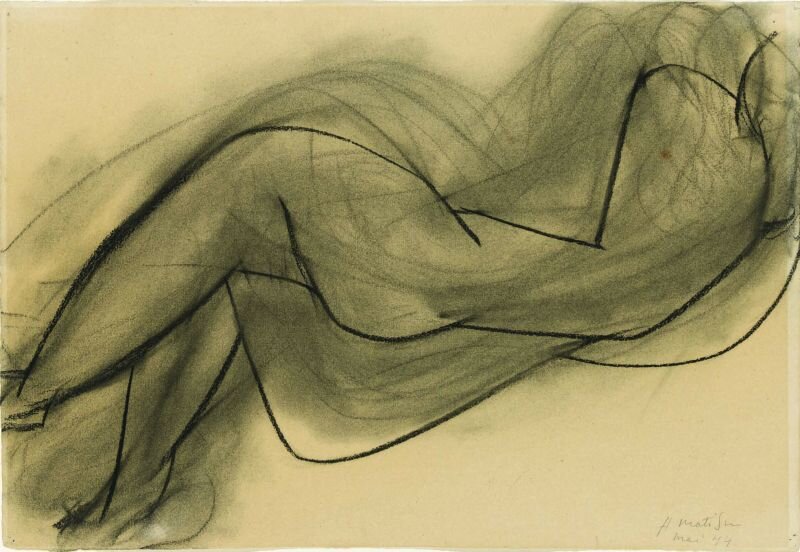At the Art Institute of Chicago, looking for paintings by Henri Matisse, Andre Derain, Maurice Vlaminck and George Braque. Their early work, in inspired by Van Gogh, played with the intense color that fuels my painting practice.
I the first Modern gallery, Matisse’s earliest painting may be the best. A still life from 1906 following a summer of artistic discovery in Collioure a town along overlooking the Mediterranean in southern France. Matisse is 37 years old when he finds the spirited color that will make his career.
This early painting, has a rich simple color scheme. The thin paint lets the white of the canvas show through giving the colors an illumination that often is lost when the paint is heavily applied. The blues and reds are more luminous here than the paintings by others nearby in the gallery. The loose transparent color captures a fleeting moment, a pleasure of life in motion. It is no monument to anything. It is life lived.
The painted image is sketchy. There is not a lot of work done trying to spell out detail.
Henri Matisse, Nu couché de dos, 1944
In charcoal sketches throughout his career, you see Matisse working the drawing, putting lines down, rubbing them out, drawing fresh lines. The drawings show hard work as he draws the line again and again, trying to find the right place on the paper. There are several examples of his charcoal sketches in the Richard Gray collection, currently hung at the Art Institute. I think I understand that all those incredible single line drawings by Matisse that you see everywhere, and that he is so famous for come from a process that begins with hard work. He studies and refines exactly what the composition should be, then pulls out a clean sheet of paper and makes a simple drawing.
I wonder if he this is the process he has made on the still life painting with flowers?
Henri Matisse, Apples, 1916
Walking two more galleries further is another still life, a bowl of apples from ten years later. The curator’s label proposes that Matisse is following a tradition in painting of the time of completing a quick sketch canvas first, then starting fresh on another canvas to do the final work. This is why this painting also has thinned paint and a sketchy style. I am not sure if the painting on the wall is the sketch or the second “finished” painting.
The vibrant colors and looseness of a bowl of apples give it an immediacy, the presence of the artist experiencing and immersed in something real in front of him.
Henri Matisse, Woman Before and Aquarium, 1926
Across the gallery is another painting of a girl peering into a fishbowl painted another ten years later in 1926. The color is there, but he painting technique is heavier, the work is starting to lose the magic of the earlier work.
Henri Matisse, Lemons on a Pewter Plate, 1926
Another still life in the same gallery from the same year. It is heavy and dead. Matisse is now 57 years, two years younger than me, from the first years after he had moved to Nice. In later paintings, he would try to recapture the luminosity of the thin paint, but the color choices were different. The live immediacy of the early work has been lost.




